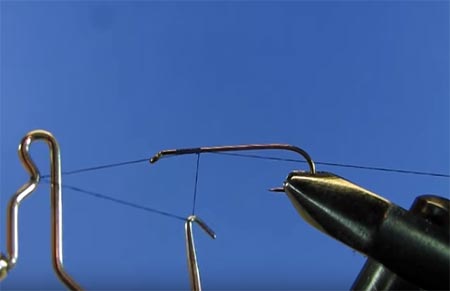Since its humble beginnings somewhere in the haze of human history, the artificial fish fly has become more than a cluster of animal fur and a wisp of feather bound to a horsehair line. There are thousands of patterns in use today, and anglers are tying countless variations upon those patterns.
Hours are spent at the vise, spinning deer hair, dubbing hooks, and trimming hackle, all in the pursuit of the perfect imitation of the small, winged insects whose fleeting lives so often end in the mouths of hungry fish.
Some flies are imitators, intended to resemble live insects as closely as possible. Others are stimulators. Anglers merely shrug when asked, “What’s that supposed to be?” It only matters that fish will bite the thing.
Fishing flies are works of art, constructed oh, so painstakingly of the most delicate materials, often on maddeningly tiny hooks, only to be cast into the water, hung up in trees, and chewed by fish.
Does the angler mourn the loss of the work? Only if there are no more in the fly box, the hatch is still on, and the fish are still biting.
Tie Fishing Flies That Have Been Successful
According to the Complete Book of Fly Tying, by Eric Leiser, (Skyhorse Publishing, 2008) there are three general categories of flies: Flies that Float, Subsurface Fly Patterns, and Bucktails and Streamers.
When deciding which specific patterns and variations to stock up on, the angler must consider both past experience and future plans.
Fish caught and fish lost, days spent knee deep in water where fish are gorging themselves on anything other than what the angler is offering, and times when skill, luck, and intelligence converge to create truly memorable fishing will all play a part in the selection process. When fish obligingly take the proffered fly, the angler may congratulate himself on his prowess in making the right call.
When fish stubbornly refuse the fly, sometimes even going so far as to sniff at it disdainfully, the angler is put to the test. What fly will be successful? Is there one in the fly box? Fishermen will naturally want to make plenty of the flies that have brought the most success.
Tie Flies for Future Fishing Adventures
Having tied a goodly supply of Adams’s, hoppers, Woolly Buggers, nymphs, and other favorites, the angler is free to dream. This is the time when one assumes that next year’s fishing will be even better than last year’s, and so will require a wider and more exotic selection of flies.
Books and magazines, videos, and friends’ fish tales all become sources of inspiration. When skies are gray, the snow is drifting down, or cold sleet rattles against the windows, the fly tier can really extend himself.
Fur and feathers are the medium of choice, along with tinsel, chenille, beads and barbells. Dreams are wound onto the hooks along with hackle, dreams of the bigger, wilder, more elusive and beautiful fish that remain to be caught.
The art of fly tying has much in common with the art of dance. Hours of preparation lead to the moment of execution. The fly is conceived as an ideal, then constructed of materials with physical limitations.
How closely can a set of gossamer wings be imitated with the stuff at hand? The tiny creation is carried to the stream, tucked safely away with its fellows in the fly box.
The angler considers conditions of wind and water, or what may be hatching. The fly is selected, tied securely to the tippet, and cast, with all the skill the angler can muster, onto the water.
If all is right, the fly drifts just as the angler hopes, and the fish rises to the surface and takes the fly. In that moment, art does not just imitate life. For the angler, art has come to life.


No comments:
Post a Comment